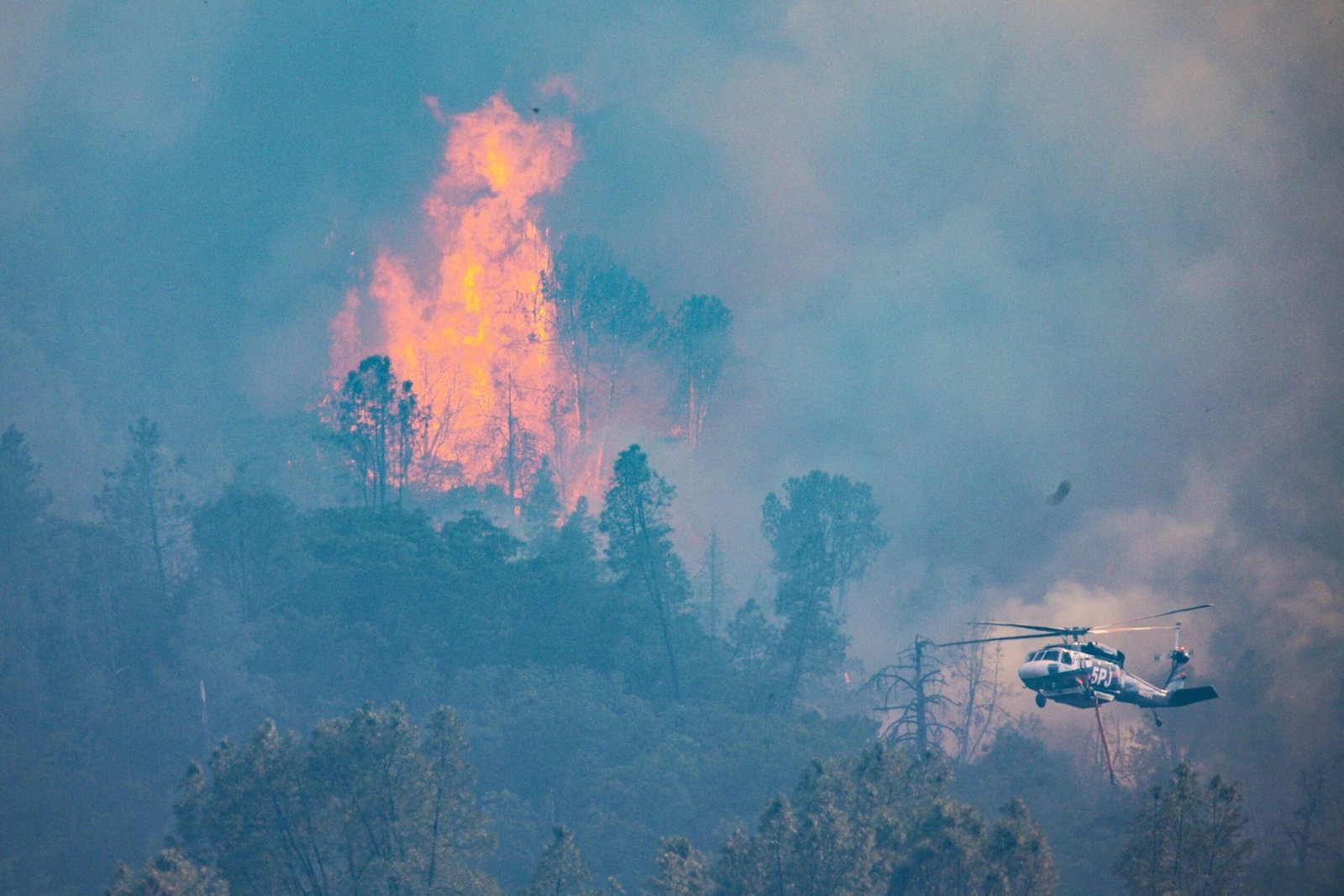The dangerous heat is affecting more than 50 million Americans in the west this weekend, with heat alerts in effect from Arizona to Washington.
An extreme heat warning is in force for cities such as Seattle, Washington; Portland, Oregon; Los Angeles, California; Las Vegas, Nevada; and Phoenix, Arizona.
A heat notice is in force for Riverside, California; Sacramento, California; and Spokane, Washington.
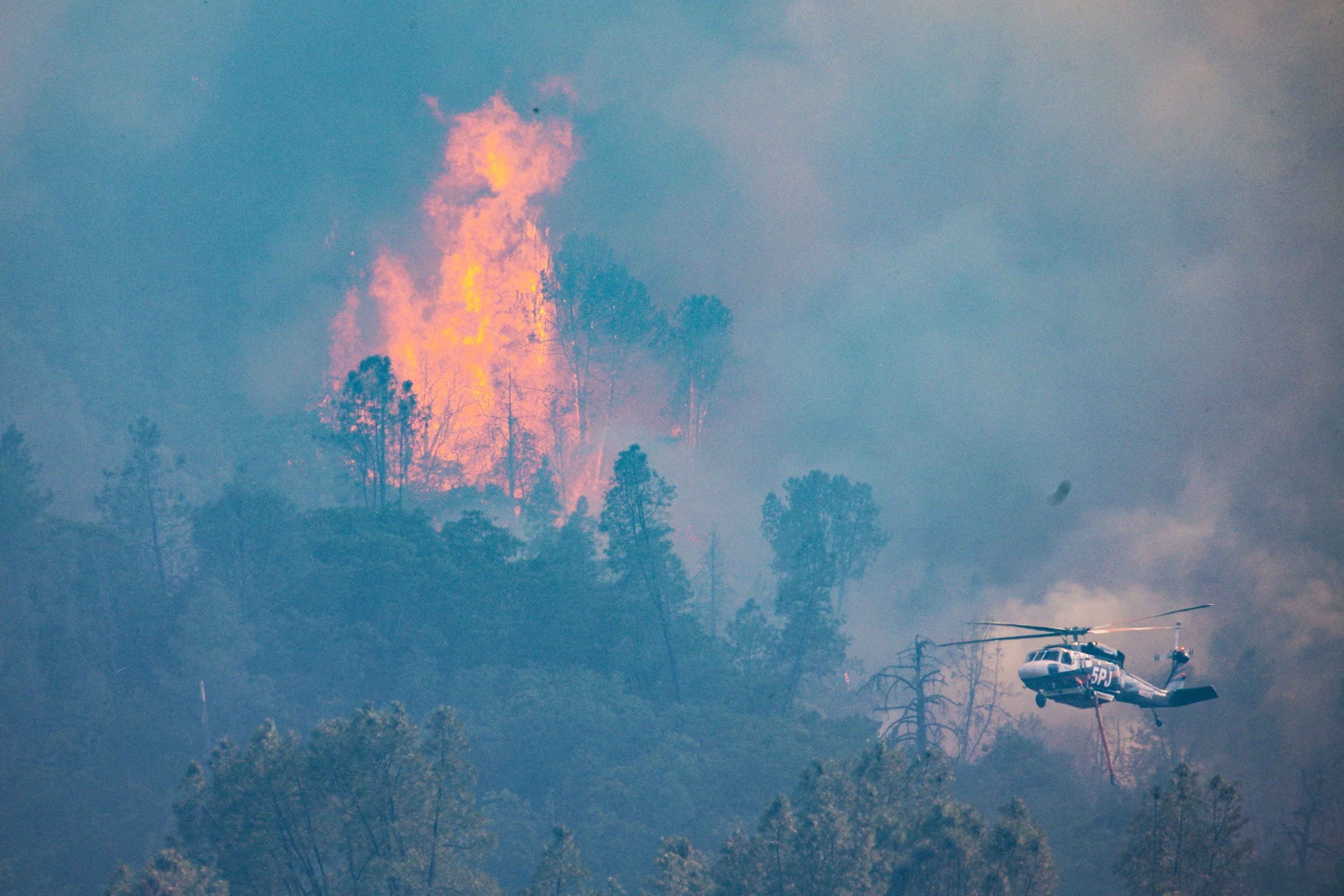
A helicopter flies near the flames from the Picktt fire in Napa County, California, on August 22, 2025.
Carlos Barria/Reuters
The temperatures on Saturday afternoon will rise in the triple digit through a large strip of the region, to the parts of Oregon and Washington.
The new daily records of records were established in several western cities on Friday and numerous will be challenged in the region once again on Saturday afternoon.
Several days of dangerous heat and challenging record will impact parts of the northwest of the Pacific, including Portland to Seattle, a part of the country less accustomed to extremely prolonged heat.
The maximums will be close to the 90s in Seattle until Monday with temperatures of the afternoon that reach the triples in Portland on Saturday and still rise to 90 on Sundays and Monday. The maximum daily records will be challenged in both cities during the next three days.
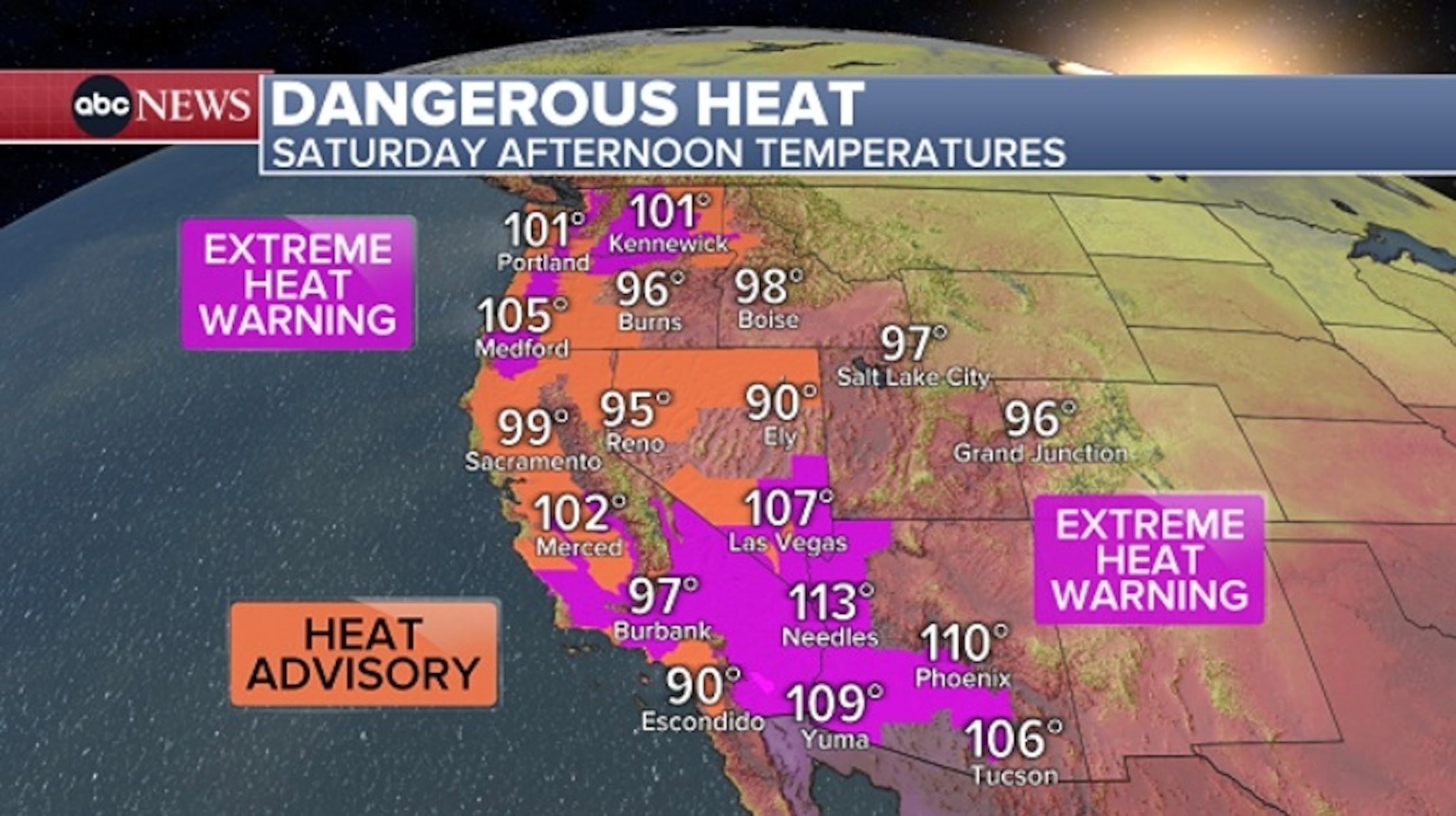
Relatively soft temperatures will make this heat wave even more dangerous, since the warmest temperatures make it more difficult for people to cool properly during the night.
The extreme heat in southern California continues to feed the concerns of the high fire climate for parts of the region, including those that are recently dealing with forest fires. The warnings of the red flag are in force until Saturday for the mountains to the north of the cities of Los Angeles, Ventura and Santa Barbara, including places like Santa Clarita, due to the scorching heat, the low humidity and the locally windy winds.
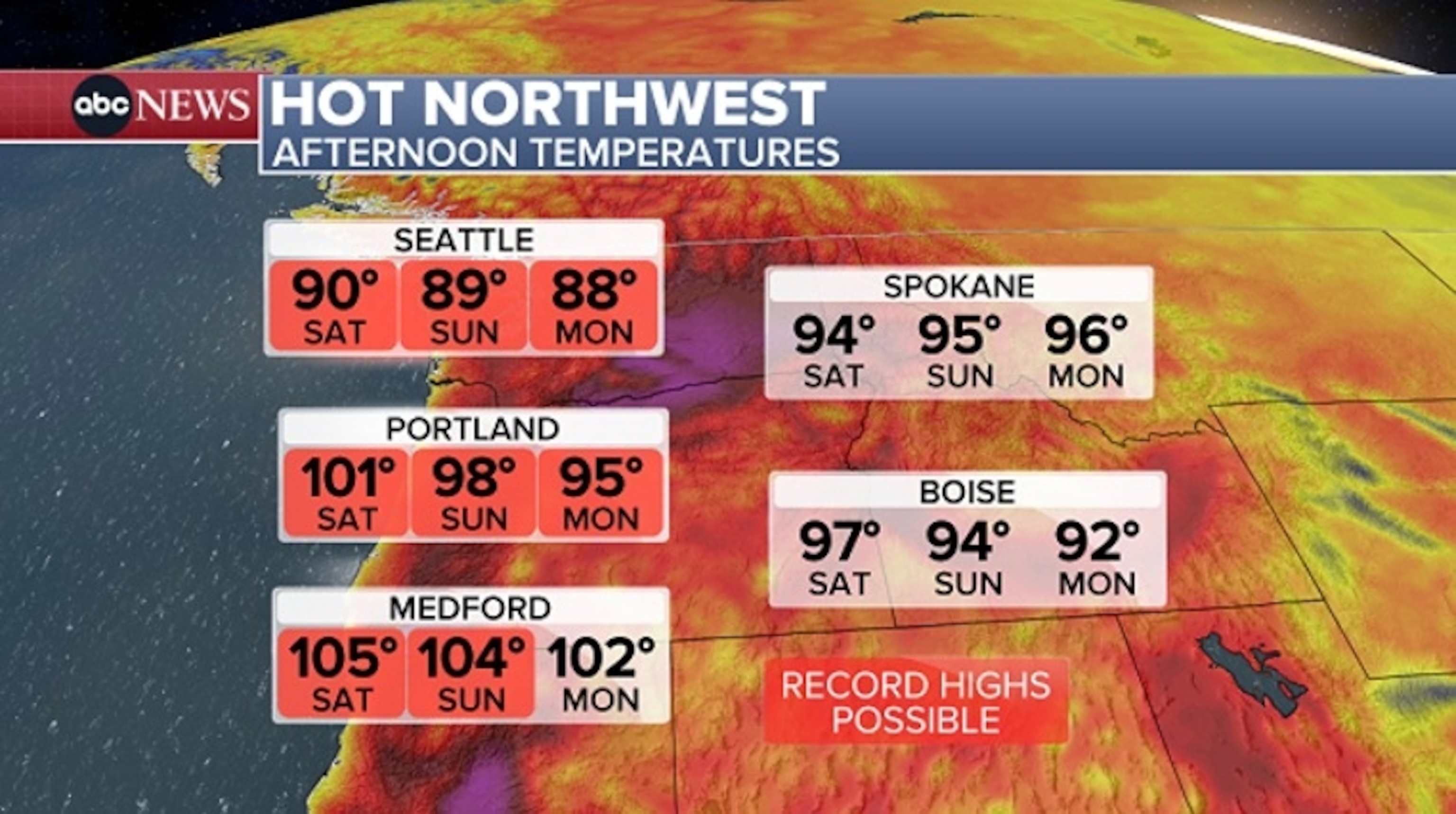
The same pattern that is bringing extreme heat in the West is also bringing the moisture of the Pacific monzón throughout the region. This is feeding the most widespread monzón storms from the four -corner region to southern California. Localized sudden floods are possible where the heaviest rain falls. The lighting of these storms could also cause new fires in southern California with hot and dry conditions in place.
This expansive and improved moisture area is also feeding isolated thunderstorms in parts of the northwest. However, most of these storms will bring rays and little rain causing red flag warnings for parts of the waterfall and the Olympic mountains in western Washington. Rays could cause new fires in the midst of very warm, dry and locally advantageous conditions.
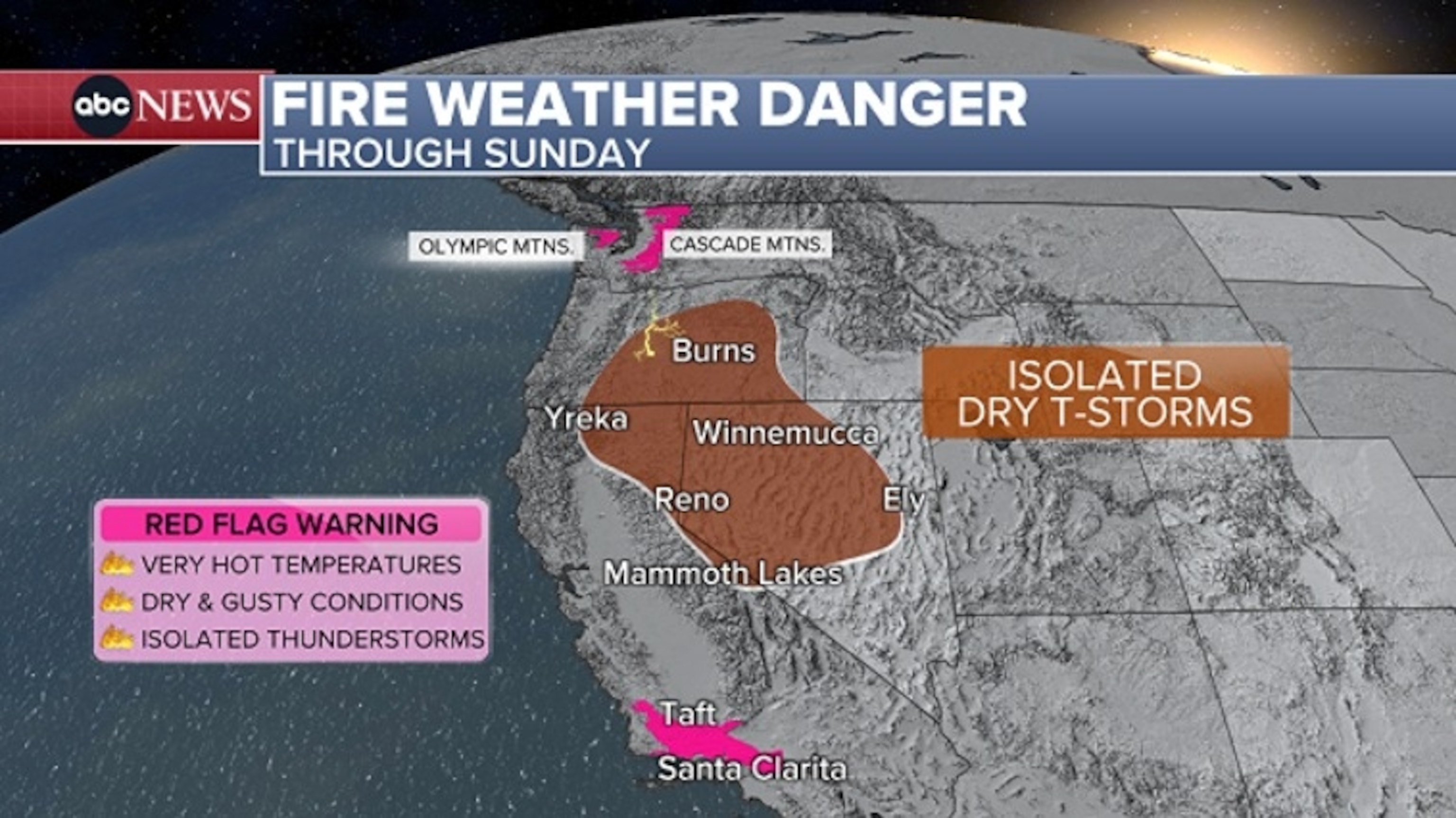
The other area is a tropical wave disorganized in the central Atlantic, located about 650 miles east of the Barlovento Islands. Atmospheric conditions are becoming unfavorable to develop this disturbance; However, the National Hurricane Center has maintained a low possibility (20%) development in the next seven days, for now.
It could bring locally heavy rains and winding winds to portions of the Barlovento Islands in the next few days.
Tropical Fernand storm is formed in Atlantic

The peak of the Atlantic hurricane season is now less than three weeks and the tropics remain active behind Hurricane Erin.
The National Hurricane Center is monitoring two tropical disturbances in the Atlantic basin, however, none of these is currently a great concern or is expected to bring impacts to the United States.
The first is the tropical storm Fernand, which formed on Saturday afternoon in the middle of the Atlantic Ocean, several hundred miles south-south-ease of Bermuda, according to the National Hurricane Center. Fernand is the sixth storm named of the Atlantic Hurricane season.
It is forecast that the storm will march north over the open waters of the Central-Norte Atlantic in the next few days.
It is forecast that Fernand will be strengthened during the next 24-48 hours, since he goes east of Bermuda on Sunday night until Monday.
Currently, the storm seems to be sufficiently east of the island to limit any impact of rain or wind, however, it could still bring a period of rough surf in the next few days.
The other area that the National Hurricanes Center is monitoring is a tropical wave disorganized in the central Atlantic, located about 650 miles east of the Barlovento Islands. Atmospheric conditions are becoming unfavorable to develop this disturbance; However, the National Hurricane Center has maintained a low possibility (20%) development in the next seven days, for now.
It could bring locally heavy rains and winding winds to portions of the Barlovento Islands in the next few days.
Erin persistent effects
Meanwhile, persisting rough surfings and the dangerous currents of hangover continue to stop in many beach plans on the east coast.
Coastal impacts will continue to gradually decrease throughout the weekend, however, the dangerous brim currents, coastal floods and rough surf impacts persist on Saturday afternoon in many areas.
The high surf notices remain in force along much of the New England coast, from Rhode Island to Maine, as well as the outdoor banks of North Carolina.
Rough surfing and large waves continue to hit the coast. From Rhode Island to Maine, the large waves of break between 4 and 10 feet are possible at least on Saturday. Throughout the external banks, the heights of the waves between 6 and 9 feet are possible.
The alerts of coastal floods remain in force until today, from the outdoor banks of North Carolina to the south of New Jersey for residual coastal floods with 1 to 2 feet of flood possible with a high tide in some areas.
Dangerous Breaks persist along much of the east coast, with most beaches under a high risk of hangover currents this weekend.

